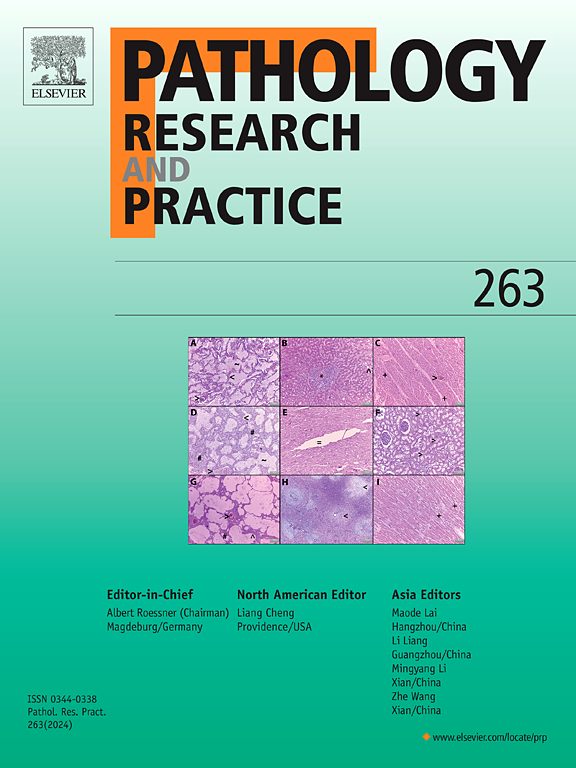Revisiting the biological role of the Warburg effect: Evolving perspectives on cancer metabolism
IF 3.2
4区 医学
Q2 PATHOLOGY
引用次数: 0
Abstract
Cancer cells exhibit metabolic reprogramming towards a glycolysis-dominant profile. This shift, known as the Warburg effect, enhances cancer cell survival, growth, and metastasis by increasing glucose uptake and lactate production. It also meets the high anabolic demands of proliferation by providing important biosynthetic precursors. Despite its long-standing discovery, the origins and roles of the Warburg effect in cancer remain unclear. Recent research has provided deeper insights into its cellular origins and involvement in cancer progression and metastasis. Therefore, this review aims to provide a comprehensive and updated understanding of the significance of glycolysis in cancer. Initially, a brief overview of the glycolytic pathway will be presented, followed by an in-depth discussion of how this pathway is altered in cancer, its biological significance, and its regulatory mechanisms. We highlight that lactate production in cancer cells may not solely reflect a metabolic inefficiency, but rather a compensatory mechanism to regenerate cytosolic NAD⁺ when mitochondrial NADH shuttles become saturated, thereby sustaining glycolytic flux under rapid proliferative demands. Finally, the review will explore the translational implications of glycolysis research in the clinical context.
重新审视Warburg效应的生物学作用:癌症代谢的进化观点
癌细胞表现出向糖酵解为主的代谢重编程。这种转变被称为Warburg效应,通过增加葡萄糖的摄取和乳酸的产生来增强癌细胞的存活、生长和转移。它还通过提供重要的生物合成前体来满足增殖的高合成代谢需求。尽管这一发现由来已久,但沃伯格效应在癌症中的起源和作用仍不清楚。最近的研究为其细胞起源和参与癌症进展和转移提供了更深入的见解。因此,本综述旨在对糖酵解在癌症中的意义提供全面和最新的认识。首先,我们将简要介绍糖酵解途径,然后深入讨论这一途径在癌症中的改变、其生物学意义及其调控机制。我们强调,癌细胞中的乳酸生成可能不仅仅反映了代谢效率低下,而是当线粒体NADH穿梭体饱和时再生胞质NAD⁺的补偿机制,从而在快速增殖需求下维持糖酵解通量。最后,综述将探讨糖酵解研究在临床背景下的转化意义。
本文章由计算机程序翻译,如有差异,请以英文原文为准。
求助全文
约1分钟内获得全文
求助全文
来源期刊
CiteScore
5.00
自引率
3.60%
发文量
405
审稿时长
24 days
期刊介绍:
Pathology, Research and Practice provides accessible coverage of the most recent developments across the entire field of pathology: Reviews focus on recent progress in pathology, while Comments look at interesting current problems and at hypotheses for future developments in pathology. Original Papers present novel findings on all aspects of general, anatomic and molecular pathology. Rapid Communications inform readers on preliminary findings that may be relevant for further studies and need to be communicated quickly. Teaching Cases look at new aspects or special diagnostic problems of diseases and at case reports relevant for the pathologist''s practice.

 求助内容:
求助内容: 应助结果提醒方式:
应助结果提醒方式:


